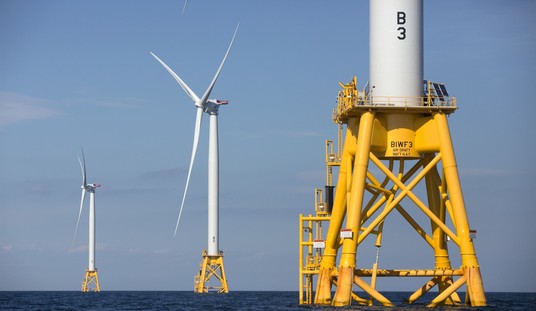“HEAVENLY Father,” take to thee
The supreme iniquity,
Fashioned by thy candid hand
In a moment contraband.
Though to trust us seem to us
More respectful—“we are dust.”
We apologize to Thee
For Thine own Duplicity.
That’s by Emily Dickinson, the wonderful 19th-century American poet who churned out almost two thousand poems in almost total obscurity, too shy to publish more than a handful of them during her lifetime.
“Heavenly Father” is a retort, couched in acid irony, and also a plaint. We are not supposed to be anything much—dust, iniquity. Creating us was a momentary lapse, a glitch. The father is not presumed to be proud of what he has wrought.
And yet, if the creations are that flawed, why blame them for their failings? It seems like a double insult—to be fashioned as something iniquitous, then also held accountable for it. Dickinson raised here a profound question about moral responsibility and the relationship of the creator to his imperfect handiwork.
The poetess died at 55 in 1886, and “Heavenly Father” is considered one of her later poems. That means she wrote it about a hundred years before the publication in 1975 of Raymond Moody’s Life After Life, the first major, groundbreaking book on near-death experiences. At that time, thanks to advances in resuscitation medicine in the 1960s, there was a sudden surge in the numbers of people—ordinary people, not mystics or spiritualists—saying they had had a direct experience of the deity. They gave descriptions of a being more logical, or reasonable, than the one Dickinson had accosted.

Words will not come close to capturing the feelings, but I’ll try: total, unconditional, all-encompassing love, compassion, warmth, safety, belonging, understanding, overwhelming sense of being home, and joy.
That’s a quote from a set of over 3600 testimonies of near-death experiences collected by radiation oncologist and NDE researcher Jeffrey Long. As he recounts in his book Evidence of the Afterlife, Long became fascinated with the subject when a friend told him about her NDE, in which, as she put it, “I found myself with a mystical being of overwhelming love and compassion.”
Earlier, in the above-mentioned Life After Life, Moody had investigated over a hundred NDE cases. As he reported:
The love and warmth which emanate from [the] being…are utterly beyond words, and [the person] feels completely surrounded by it and taken up in it, completely at ease and accepted in the presence of this being…. [This description is] utterly invariable.
Starting in the late 1970s, Dutch cardiologist Pim van Lommel, who had been an atheist as long as he could remember, found himself repeatedly amazed by NDE accounts of resuscitated cardiac-arrest patients at the hospital where he was working. Van Lommel launched a 20-year study of NDEs. In 2001 he published his results in The Lancet, one of the world’s leading medical journals, and in 2010 he brought out his book Consciousness Beyond Life.
As van Lommel wrote there:
The] encounter [with a being of light] is always accompanied by an overwhelming sense of unconditional love and acceptance.
The most remarkable NDE yet on record occurred in 2008 to neurosurgeon Eben Alexander, who described it in his huge bestseller Proof of Heaven. Alexander had this to say:
The unconditional love and acceptance that I experienced on my journey is the single most important discovery I have ever made, or will ever make….
If you search “unconditional love” at Jeffrey Long’s site, you get about 300 cases of people using that exact phrase in their NDE reports. It seems a far cry from Dickinson’s harsh, unfair deity.
I encountered the unconditional love myself once in a non-NDE mystical experience when I was 23. It was stunning; I had come into the light’s presence via a Jewish pathway, and, seeing myself as a deficient Jew as well as human being, was amazed by the total acceptance, encompassing past, present, and future.
And yet, though that sense of amazement and gratefulness stays with me to this day, the deity’s attitude makes sense—more sense than the callous hypocrisy of Dickinson’s “father.” We are flawed and weak, inevitably falling short of even our own standards, let alone divine ones. We were made that way. Why punish us for it?
That is not to say the NDE record tells us we can do anything and get away with it. As NDE researcher Kenneth Ring notes in an interesting piece about him, and as I discussed in the previous article in this series, “there is the other side of the coin—the life review.” That is, a widely reported component of NDEs in which, as one person described it to Ring:
Multitudinous actions or thoughts, derived from my own meanness, unkindness, or anger, caused me to feel the consequent pains of other people. I experienced this even if at the time I had hurt someone, I had chosen to ignore how that would affect them. And I felt their pain for the full length of time they were affected by what I had done.
If it sounds rough, many near-death experiencers report that it is. But as Ring adds:
in these life reviews, justice is seemingly always tempered by a kind of mercy that allows most of us to re-experience our lives without teeth-gnashing anguish and remorse.
There is never any condemnation—you are not judged….
You are already forgiven.
You are only asked to look at your life, and to understand.
After so many centuries of speculation, at last some empirical data is coming our way, and some things are falling into place.










Join the conversation as a VIP Member